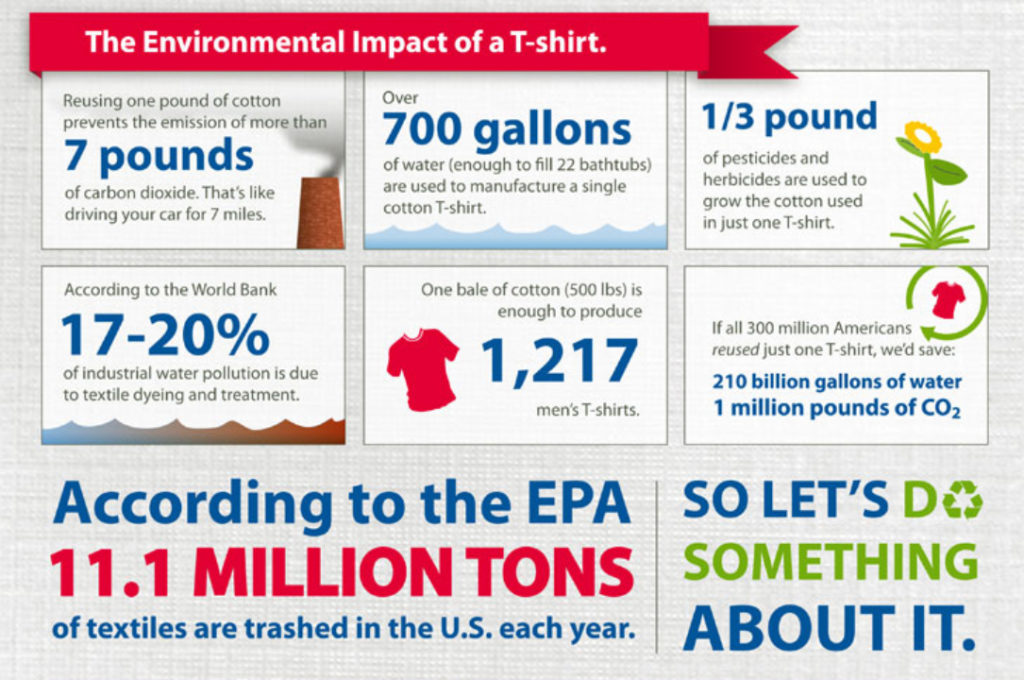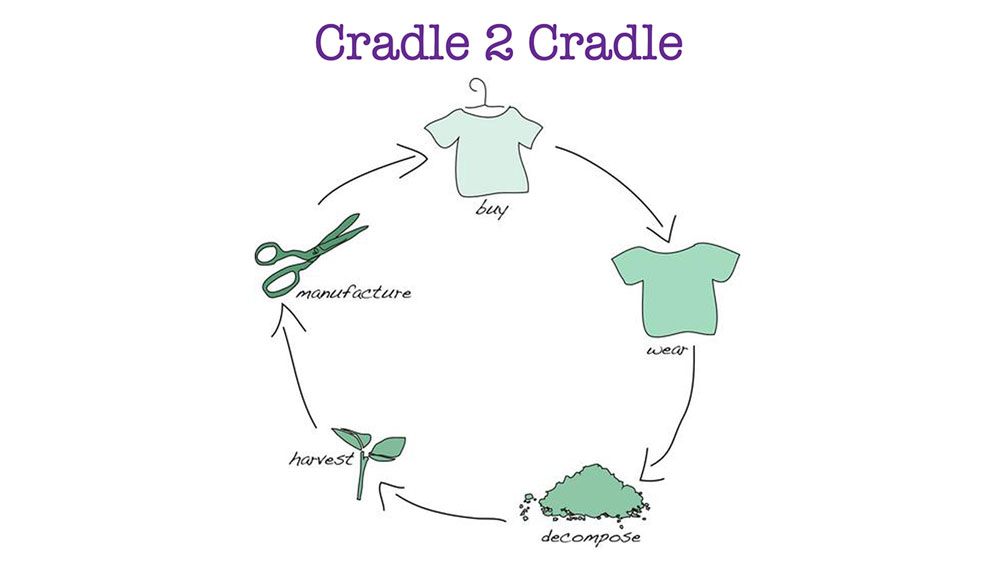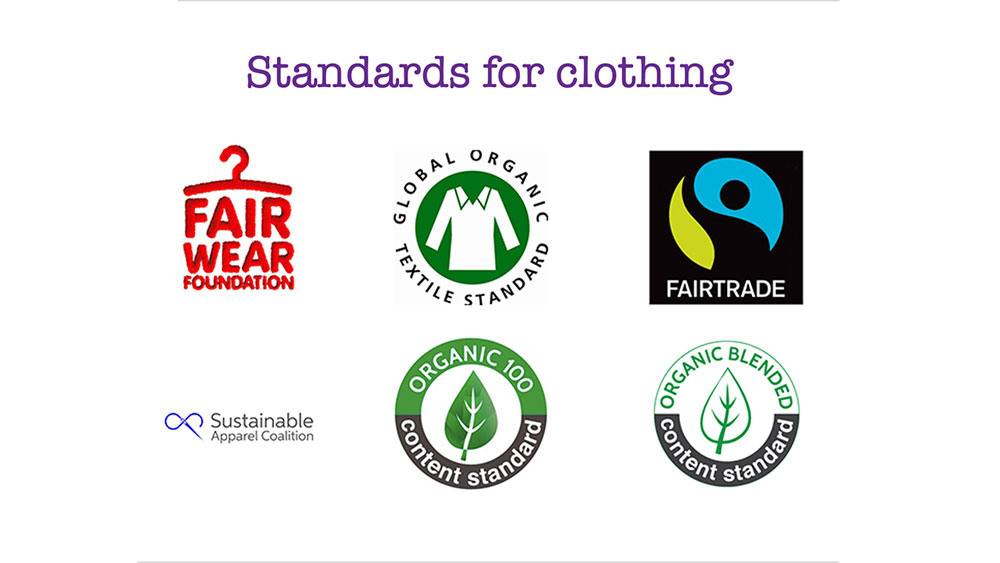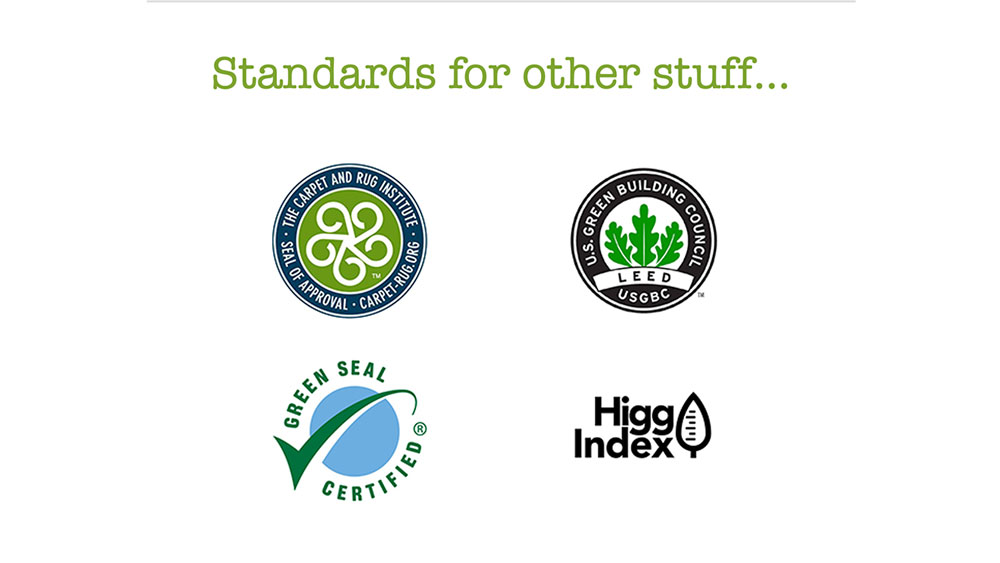Detailed post for episode 8 of The NEW GD Show
This was an information-dense episode AND WE ONLY SCRATCHED THE SURFACE of the important topic of sustainability of textiles for fashion and home. Hang in there and enjoy the ride.
Listen to the show here …
or
Watch the show here …
We’ve talked, written and reported quite a bit about the eco-friendliness (or not) of the fashion industry and manufacturing of textiles is always a huge component. Inspired to revisit this topic by our new sponsor Cariloha, we were heartened to find that the industry is evolving in a more sustainable direction in many ways.
People are more educated about how some fibers are grown and demanding organically grown cotton for instance. And folks are more sensitive to the plight of workers around the world and are more mindful about fair trade. In general there has been a greater demand for transparency all along the line from sourcing and manufacturing to distribution and ultimately how the garment or household linen is disposed; and companies have stepped up.
According to the Grand View Research Market Analysis Report – The eco fabric market size was valued at $40.58 billion in 2019 and was expected to grow at 4.6% each year from 2020 to 2027. Of course, we don’t know what really happened this year during the pandemic, but it’s obvious that people are becoming more concerned about toxic production in fabrics. And there are rising concerns about the impact of synthetic fabrics on the planet.
Clothing is the second largest pollution source in the world

Let’s look at the lifecycle of your favorite t-shirt…
- What is the shirt’s lifecycle?
- What is it made of? It all starts with the fiber…
- Plant, animal or crude oil?
- How was it manufactured?
- What is its durability? How long will it last?
- Where does it go when you are done?
- Upcycling, recycling, landfill?
According to the EPA, Eighty-three percent of used textiles are tossed in the garbage, even though the majority of these items can be donated for reuse and recycling. Even items that are worn and torn can be reused as rags and insulation.
Apparel and footwear industries currently account for 8% of global greenhouse gas emissions, nearly as much as that of the whole European Union, according to a recent industry report, Measuring Fashion.
Ethical sourcing
Use renewable energy
Minimal use of toxic chemicals
Responsible water use & clean water output
Social Responsibility – for workers, community
Impact of materials on humans, animals environment
Reusability / Recyclability / Compostability of product

Good news – This is what you can expect from Organic eco fibers – they are grown in controlled settings without using herbicides, chemicals, and pesticides. Growing conditions for the product are extensively monitored and audited by certified agencies across the world. Organic cotton is the most commonly used eco fiber across various end-use industries owing to its superior characteristics.
Non-organic fabrics can have negative health effects on humans
A study by Greenpeace that randomly tested clothing from over 20 brands including Adidas, American Apparel, Burberry, Disney, the Gap, H&M, Nike, Primark, Puma and Uniqlo found hazardous chemicals in the finished products for adults, and for kids (who are more vulnerable to the effects of these chemicals).This is stuff that disrupts hormones, messes with endocrine function, attacks the immune system and could be carcinogenic. (You can check out the full list of chemicals that Greenpeace suggests removing from clothing manufacture, the impacts of each, and what they are currently used for here.)
What can we do about it?
- BUY LESS – QUALITY NOT QUANTITY
- BUY USED
- BUY SMARTER – cheap isn’t always best
- SWAP/SHARE
- CAN IT BE RECYCLED OR UP-CYCLED?
- WHAT IS IT MADE OF?
- WHO MADE THIS AND WERE THEY SAFE DURING THE PROCESS?
- GET EDUCATED – there are organizations that have created standards for organic, sustainable and fair trade standards for clothing and household textiles

